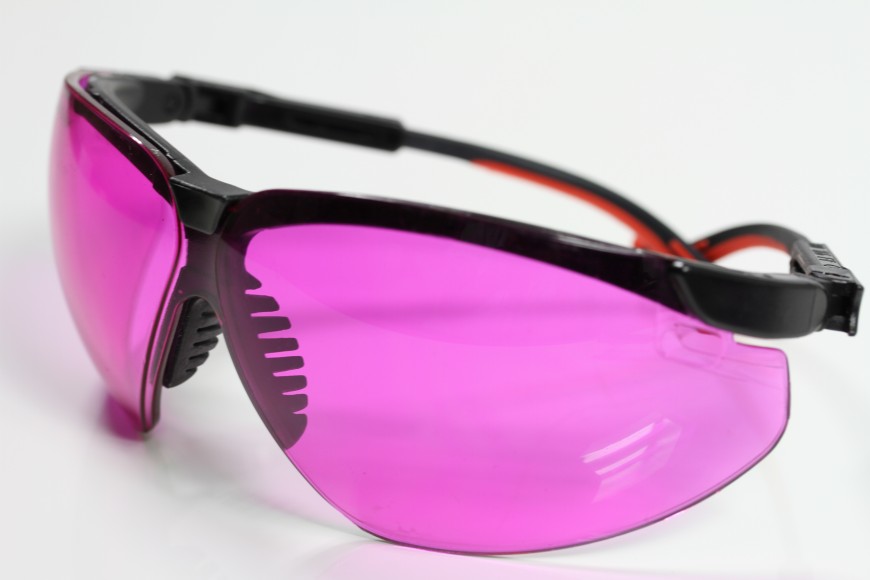When Color Blindness Gets in the Way of Your Career Dreams

At some point, pretty much everyone wanted to grow up to be a police officer, a fighter pilot, a firefighter, or a doctor. Something no kid ever imagines is that a common medical issue could get in the way of those childhood dreams.
Eight percent of men and 0.5 percent of women, or about 12 million Americans, are at least partially color blind. Unfortunately, the condition can impact career choices.
I used to be a combat engineer in the U.S. Army, a position that requires normal color vision. Combat engineers regularly handle explosives, and my understanding is that certain types of color blindness can cause fatal accidents. Upon further contemplation, I’ve often wondered what other jobs could be affected by something as common as color blindness.
The Doctor Is In
As it turns out, a number of professional choices can be negatively impacted by a color blindness diagnosis.
“Medicine, electricians, pilots, truck drivers, chefs, fashion, and many other occupations where people don’t even realize there’s a problem,” says Dr. Mark Changizi, a neuroscientist and inventor of corrective lenses for color blindness at 2AI Labs. “One of the most common – and most dangerous – areas for colorblindness is in medicine. This is something doctors have noticed as far back as John Dalton in 1794, who himself was color blind, and said, he ‘could scarcely distinguish mud from blood on his stockings.'”
This makes the condition a big problem for anyone in the medical profession.
“Veins are imperceptible, as is cyanosis, erythema, rashes, etc.,” Changizi says. “This is a serious handicap for physicians, nurses, paramedics, and other medical personnel. Color blind medical personnel are actually suffering from something I call ‘health blindness.’ This refers to a limitation of naked-eye diagnostic skills due to color blindness.”
One of the most difficult problems of being color blind is that you may not know that you have the condition.
“Blindness to one’s color blindness is common,” says Changizi. “After all, there’s no label in a color deficient’s visual field saying the true color may be different than it appears. In light of people often being blind to their color deficiency, the dangers I mentioned for medicine are actually much worse. Not only are color deficients missing key medical signs, but they (and their patients and colleagues) don’t even realize they are.”
Color Blindness on the Job
Color blindness doesn’t only affect doctors. It can affect any number of workers in myriad ways. Office workers may have trouble reading charts and graphs, web designers might struggle to make a visually friendly site, and professional drivers could struggle to read some traffic lights.
“Color blindness testing is a factor only for a small number of jobs, including very easy tests for truckers and more serious tests for pilots,” Changizi says. “Some countries have, at various times, had color blind tests for physicians in training, but currently there is no testing in the U.S.”

Dr. Changizi’s Color Deficiency Correcting Glasses
The good news is that technologies are now in play that can correct color blindness disorders for most people.
“In 2006, I made a discovery on what our color vision is for, that it’s actually optimally designed for seeing emotion and health color states on the face, like blushes and blanches and flushes,” Changizi says. “It’s actually optimized for seeing key facets of the blood just under the skin, and that’s why color blind people are so bad at seeing health states.”
Once Changizi had discovered this about color vision, he and his partner, Tim Barber, were able to figure out what needed to be done to correct color deficiencies. This lead to the creation of “Color Blind Glasses ” that amplify the proper signals.
“Not all colorblindness technologies enhance the signal our color vision is designed to see, and so don’t correct color vision correctly,” Changizi says. But his and Barber’s glasses do.
While most color blind people have likely learned to adapt to their conditions, that may not be the case for everyone. For those who struggle with color blindness at their jobs, checking out the latest technologies might make a day at the office (or behind the wheel, or in a cockpit) a bit less stressful.

